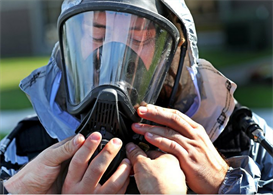Opioid Hysteria Comes to Massachusetts Courts
This month, Massachusetts became the first state to ban fentanyl and carfentanil from being brought into courthouses as exhibits, out of concern that these substances are simply too dangerous to be in public places.
16 Feb 2018The policy is based in part on the idea that even minuscule amounts of skin exposure to these drugs can be life-threatening. This is patently false — and we fear that it will worsen what is already a public health crisis.

This false belief about the danger of these drugs seems to stem from several unsubstantiated — though widely disseminated — media reports over the past year. In one such story, a drug patrolman became ill after brushing some powder off his uniform that he picked up while searching a suspect’s car. First reported by local news in Ohio, the story was picked up by “CBS This Morning,” The Washington Post and CNN, to name a few. In another case, also in Ohio, three nurses went from cleaning a patient’s room to waking up in hospital beds of their own. After local media reported it, and The Associated Press and US News & World Report took it national. In both cases, the victims were given naloxone, the highly effective opioid reversal agent, and ultimately recovered.
Share this on: